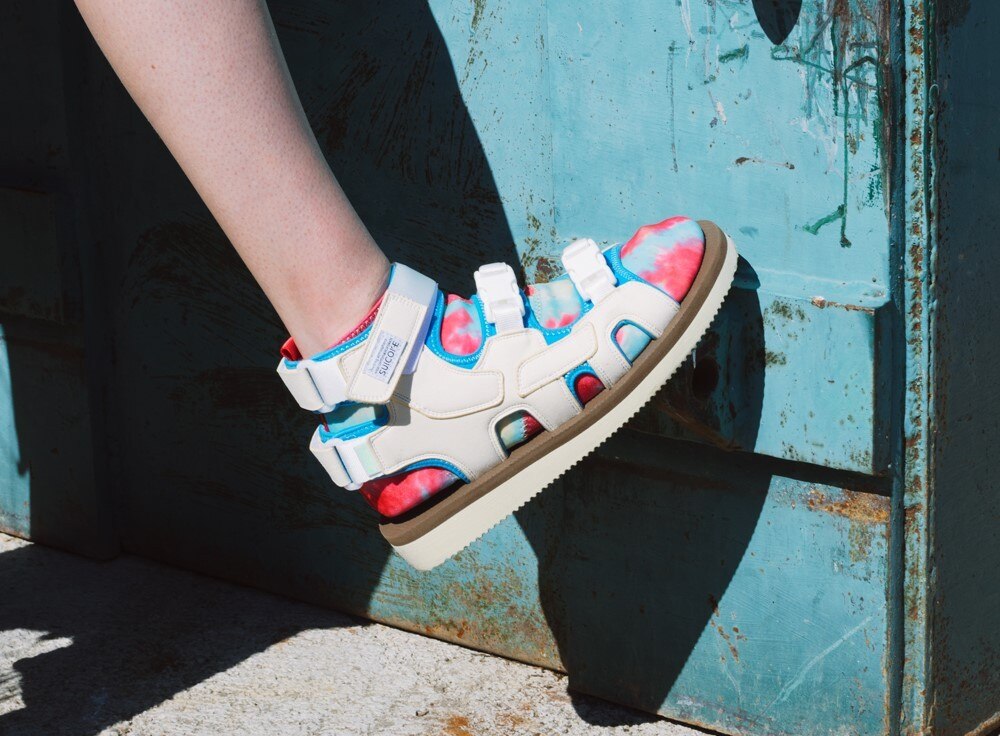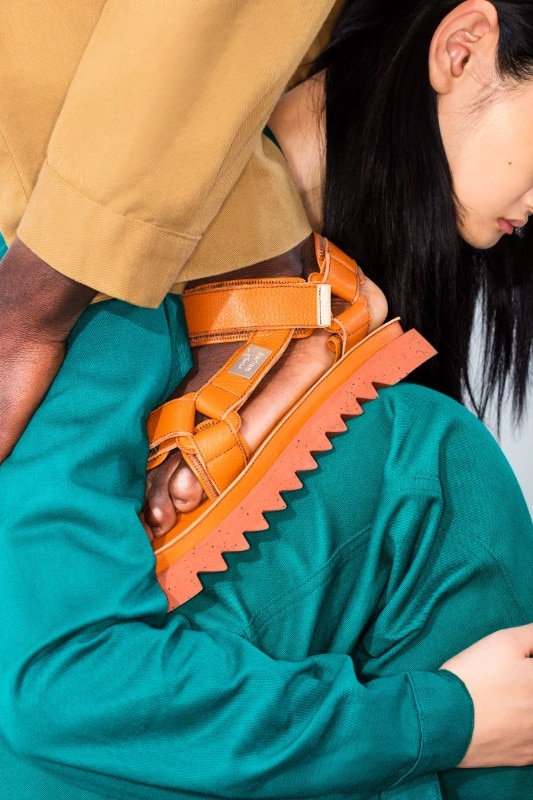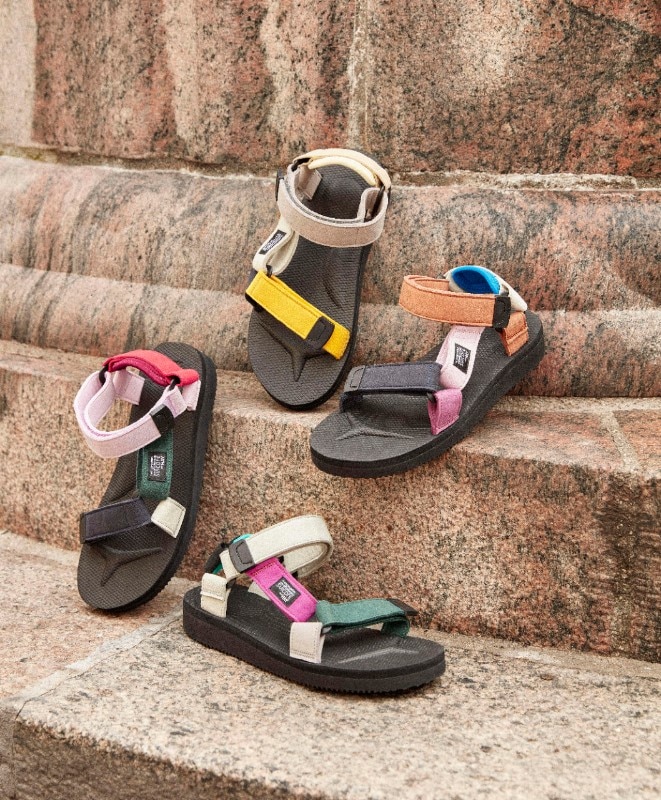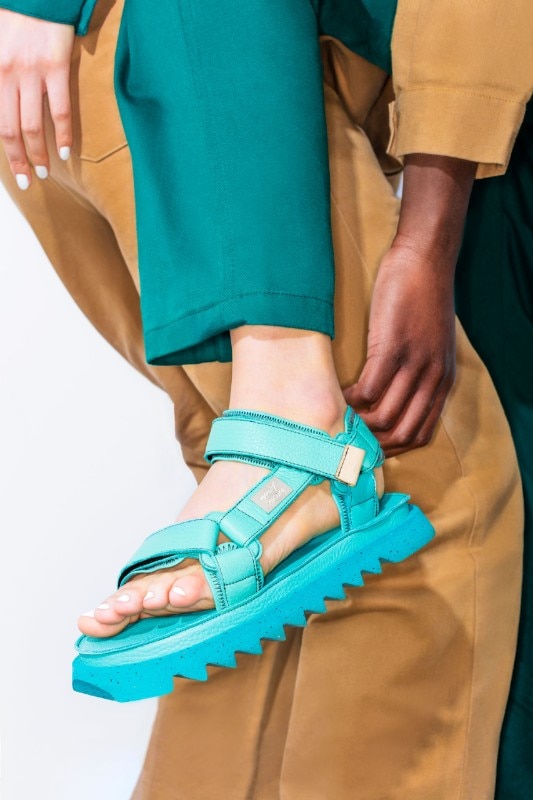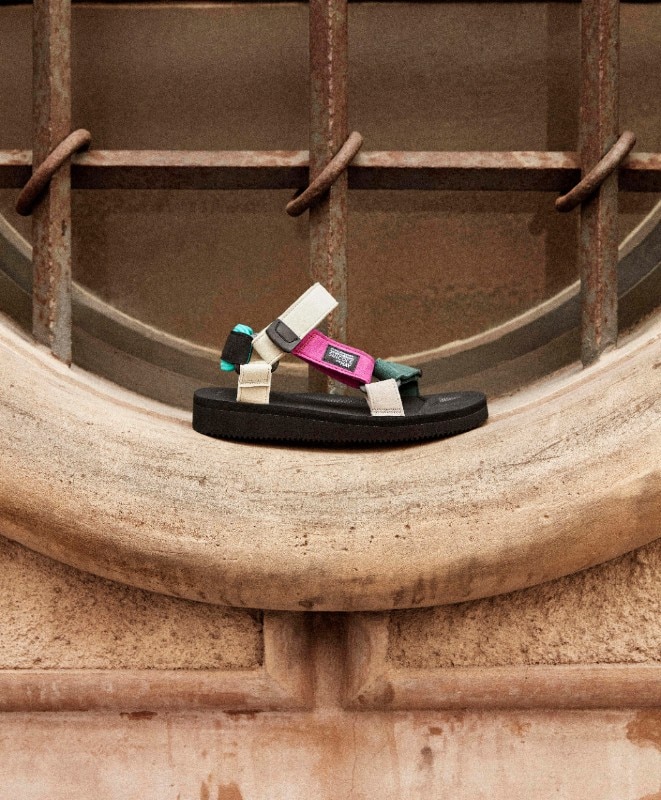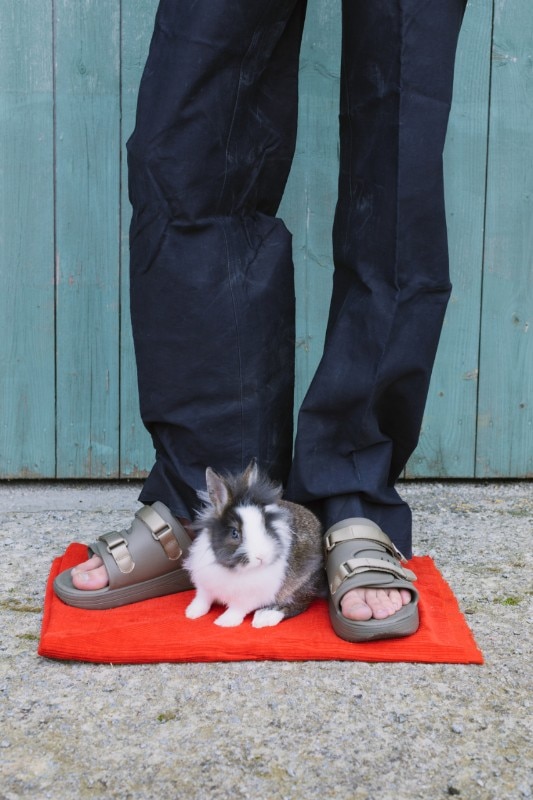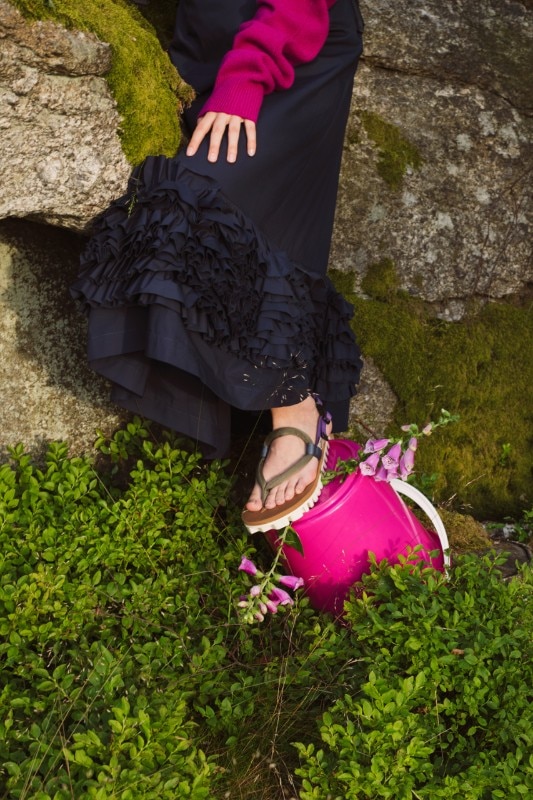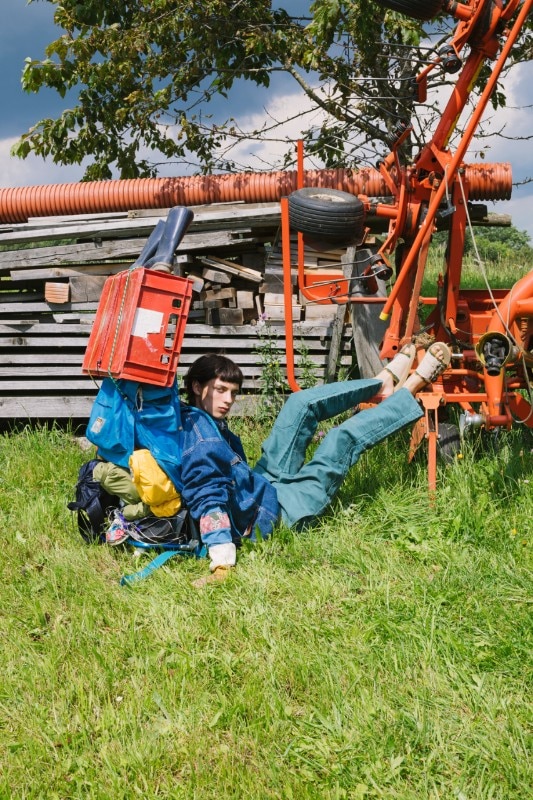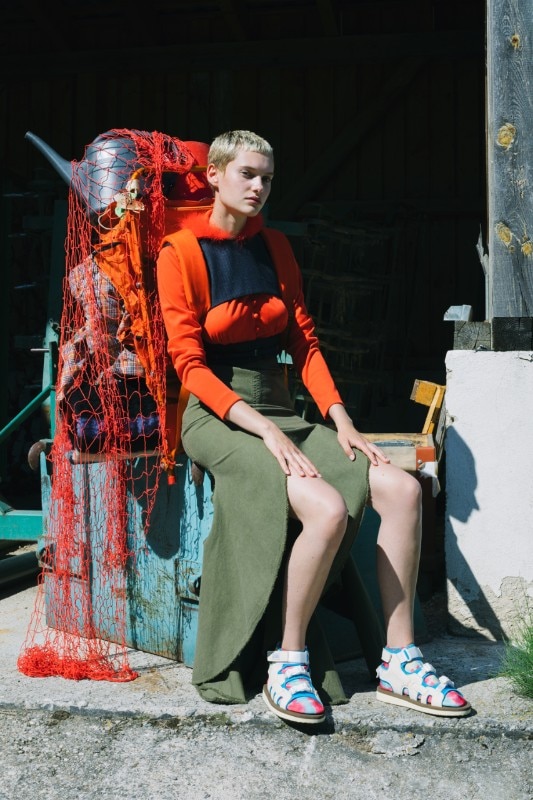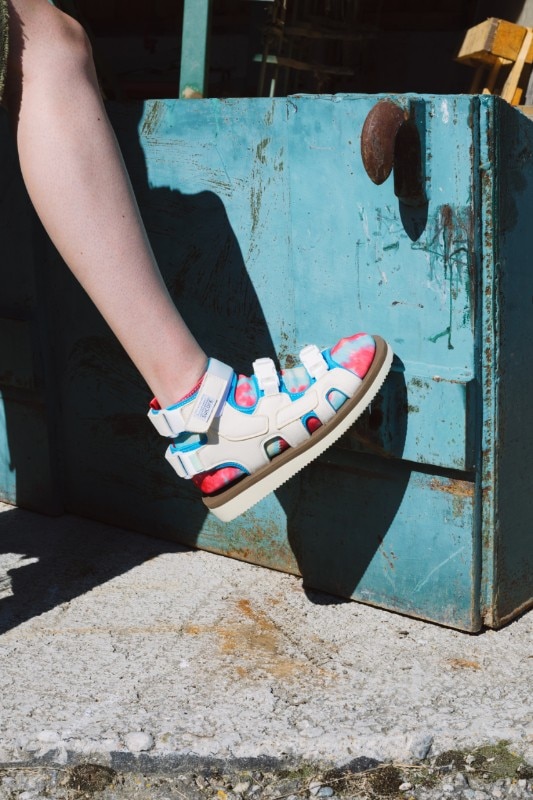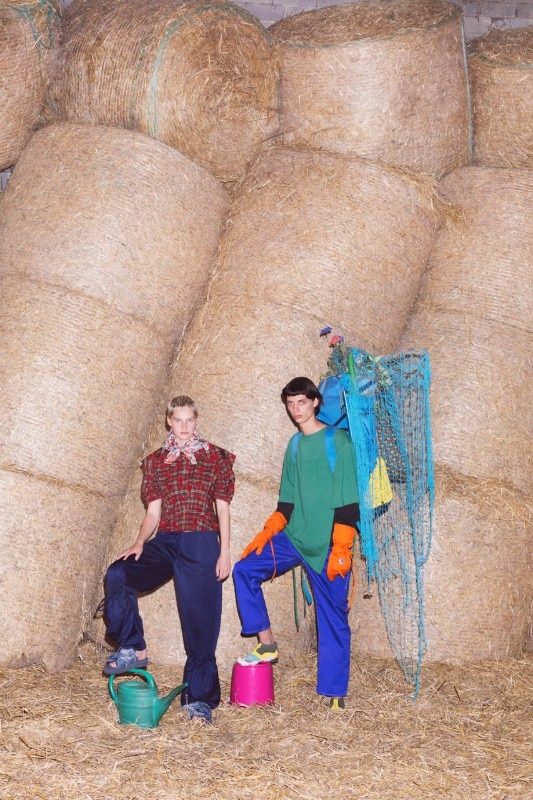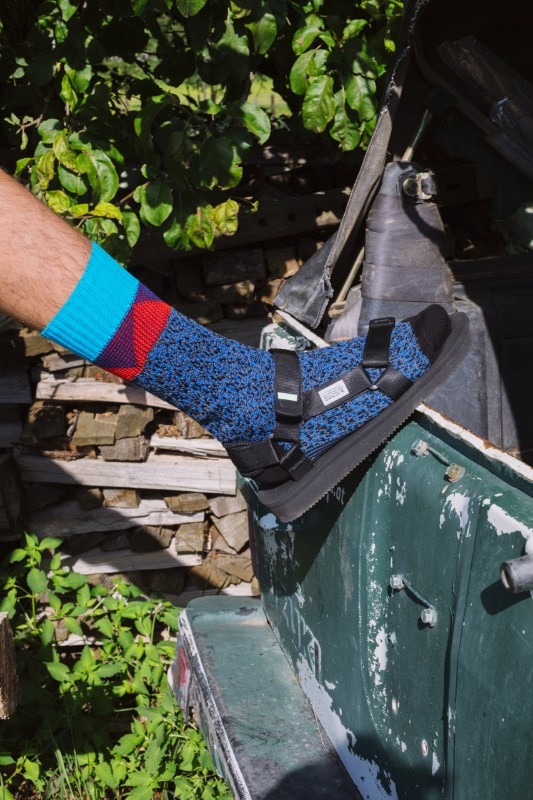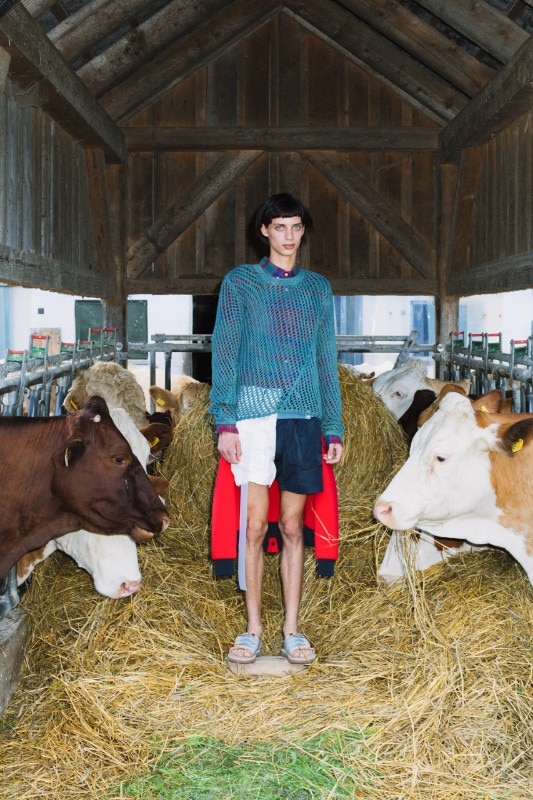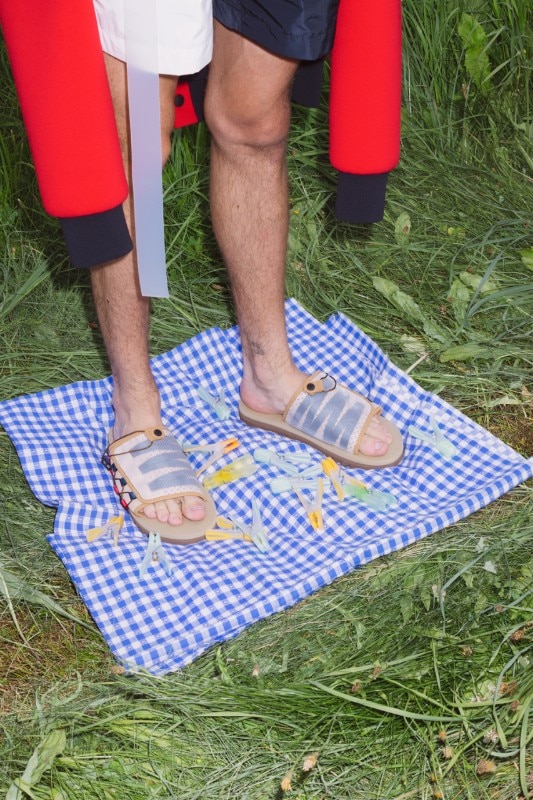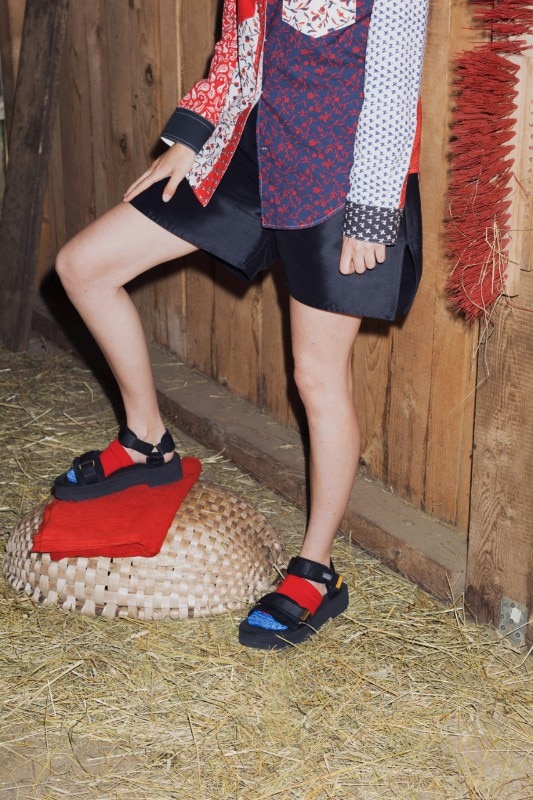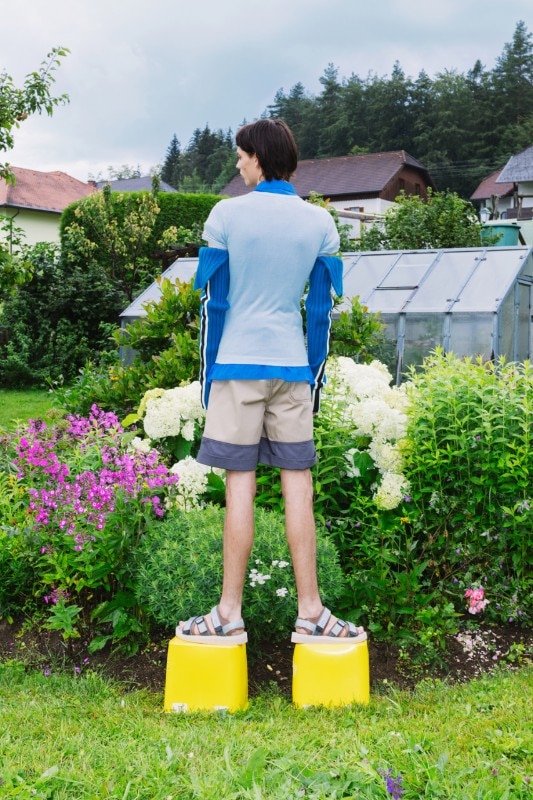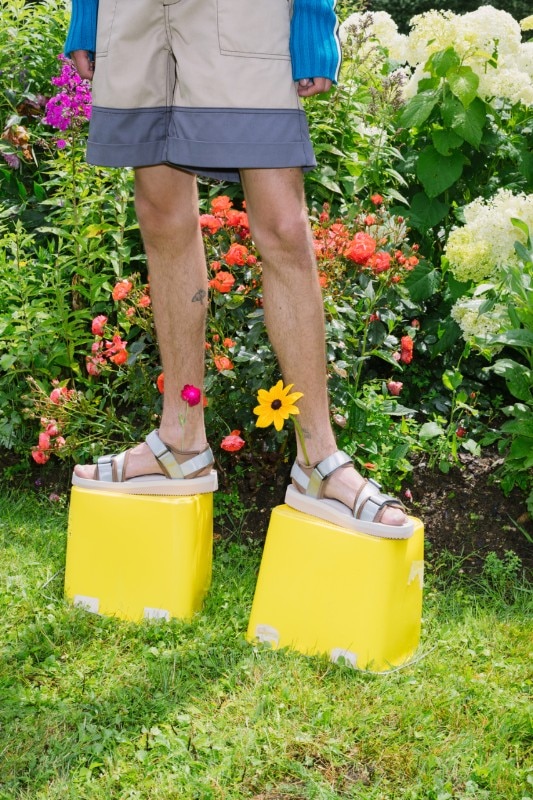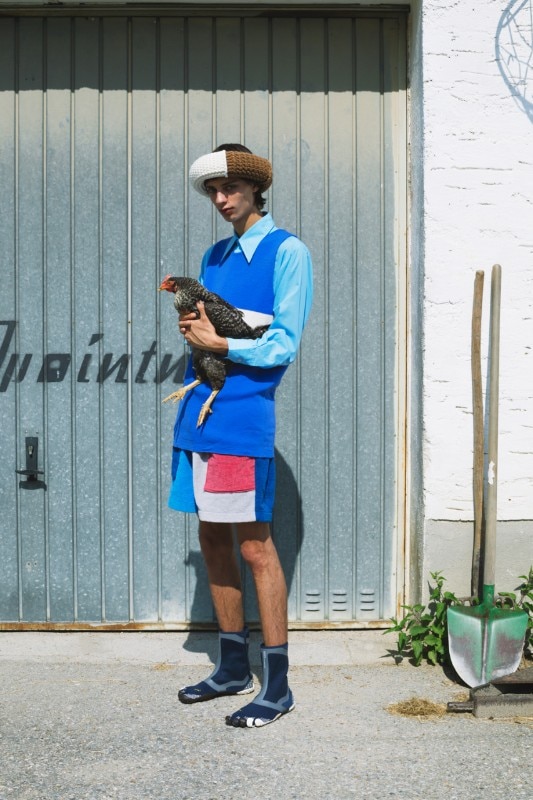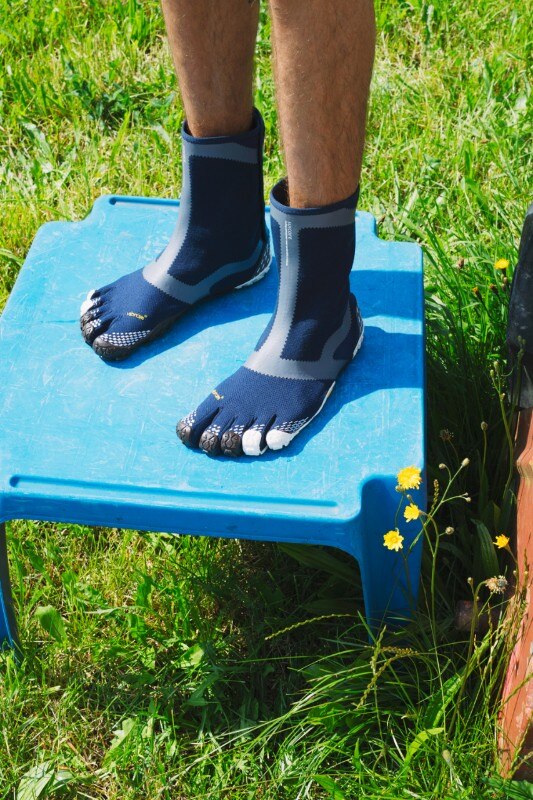Suicoke’s range of experimental sandals evokes the silhouettes of traditional Japanese footwear. From the “Zōri” sandals, flip-flops made of rice straw or other natural fibres typically worn with the kimono, to the “Jika-tabi”, a boot with a rubber-coated sole and the big toe separated from the others.
Today, it has more than three hundred shops worldwide, and its success is not only due to aesthetics but also to the functional performance of the products and the quality of the materials.
Thanks to its collaboration over the years with important fashion and design brands such as A Bathing Ape, Golf Wang, Needles, Palm Angels and Hay, Suicoke has managed to build a worldwide reputation. The secret of its success probably lies in its founding principles: functionality, elegance and “Japanese-ness”.
Considered for decades as an accessory radically linked to the aesthetics of ugliness, today the sandal has become a real cult object. «For years, especially in Italy, the sandal has boasted a ‘bad’ reputation because it has always looked like a footwear worn by the typical elderly tourist, German or American, along with white socks and cargo shorts», Enrico Pasi says, EMEA General Director Suicoke.
How do you turn an ugly shoe into a cool accessory?
The sandal is a shoe that has been around since the ancient Greeks and Romans and has an important history. It was not easy to legitimize, and it took time, especially after a period of stand-by in which we saw various trends follow one another: the classic shoe, sneakers, the solely and exclusively white sneaker. Every time I put a pair of Adidas Stan Smiths on, my father asked me if I was going to play tennis.
So, when does the trending process start?
When the right people start wearing a certain article of clothing or footwear. There are people who have an impact on the market by wearing something in a cool way, and collaborations with other brands stimulate a collective approval that gives rise to a trend as well.
Can you give some other examples?
Think of the trucker cap, the one with the plastic mesh on the back, which initially looked like a truck drivers accessory, or the jeans themselves, which originated from work pants. Working in this sector, we are used to merging workwear (functional and practical) with fashion. In the consumer market, we need to start a process of gradual digestion of the trend, to be done in steps. We start by telling people about its appeal and then, we gradually reach everyone, it is like a pyramid. Today I see high school kids walking out of school wearing sandals and until a few years ago I would have never expected that.
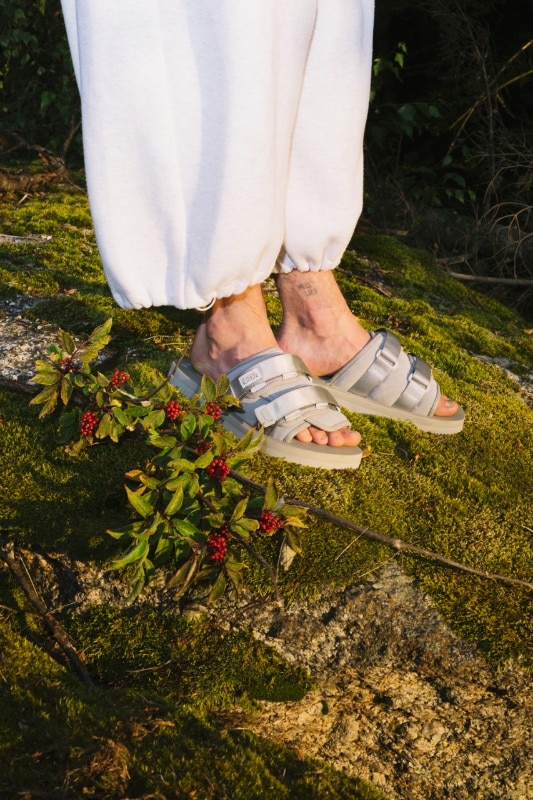
Suicoke was born as an “anonymous” brand, without aiming at big designer names. Why this choice?
This represents a break, so I will answer with a question: do you prefer to focus on the quality of the product or on the name of the designer? As a Japanese brand, we follow the oriental philosophy and therefore the product is much more important for us. In Japan everything has to have a specific value, they are much more attached to the concept of functionality, which is also the reason why sandals are a must-have footwear for them. While in the West the presence of a designer plays a fundamental role, in Asia we try to avoid this kind of correlation because there is a risk of being immediately identified with the name of the designer, as if what we wear becomes a manifesto of ourselves. However, when you wear Suicoke, a brand without a designer, you show you are wearing a product because it is beautiful, perfect and functional for you. We are a brand, not a designer.
What was the product of the turning point?
In my opinion the classic “Moto” slipper, the sandal with an upholstered in fabric upper strap with a double upper loop with a Velcro logo to adjust the fit, an ergonomic insole and a notched rubber sole. At the beginning, when we imported it to Europe, it was not among the best-selling products. The boom came when the cool people, including many rappers, started wearing it. Then, with the lockdown, it has become a real item in many wardrobes because of its functionality and comfort both at home and outdoors. So, the classic Suicoke sandal caught on in the West, thanks above all to the project with Cecilie Bahnsen, which gave us great credibility, especially among the female audience.
...when you wear Suicoke, a brand without a designer, you show you are wearing a product because it is beautiful, perfect and functional for you. We are a brand, not a designer.
How many people are there in the company?
The company is based in Tokyo (Ebisu) and is a very small group, we are about ten people of which only two are outside Asia: I am in Milan and another person in New York.
Where and how is Suicoke produced?
The shoes are made in China because that is the heart of industrial production, which handles technical materials as nylon and neoprene. It is also convenient for us when we work with Vibram’s products, which supplies the soles for several models of our sandals, because one of their HQs is in China, even though the heart of the business remains in Albizzate, in the province of Varese.
Speaking of Vibram: why do you both realise “Five Fingers”?
The five fingers are a Vibram product, designed and registered by them. We have always been fascinated by their principles of functionality and comfort. For this reason, we decided to reinterpret this model, starting with the idea of wearing a shoe that allows your fingers to be in contact with the ground. The Suicoke was designed with a trail sole (Vibram FF has different types of soles) and starting from the sole we designed the upper model with our twist and our colours. Suicoke’s five fingers boot with Vibram has a hook-and-loop fastener at the back that reminds of a Japanese tabi, a shoe designed to carry sedan-chairs by hands on the road.
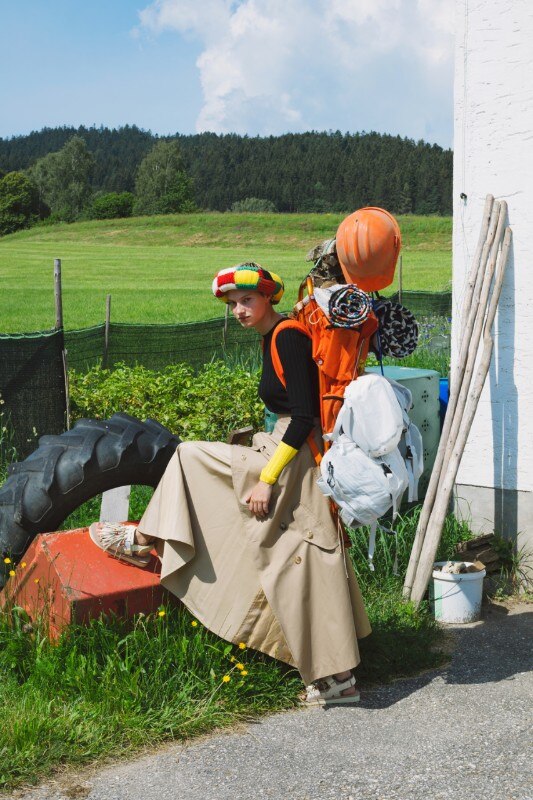
Do you think the fact that it is an object linked to Japanese aesthetic culture may have influenced the European market and its consumers?
When a brand comes onto the market, the values and traditions of its origin country are fundamental for this brand to be successful and for its consumers to recognise themselves in it. For Suicoke, being a Japanese brand was fundamental to get out of the Asian market and to enter the international one.
And how has the Japanese sandalwood culture been translated for Westerners?
We had to make a few small adjustments to ensure that the product was stabilised in the western market. For example, we had to revise all the shapes of the shoes because every population has a different fit. The American one does not have the same European fit, let alone Asian, the Americans could not close Suicoke at the beginning. We also had to revise the colours: while in Asia we tend to use neutral colours such as beige, grey or blue, in Europe stronger colours or patterns work better and sometimes we make things exclusive to certain markets. So, we have adapted the canons without changing them.
You have many collaborations. Can you name three that are particularly important to you?
Definitely the most recent one, the one with HAY, the “good” design company for everybody. We combined their colours with our sandal and the result is a very elegant product, an easy, immediate collaboration that has allowed us to involve a new audience among our consumers. Another important collaboration, to be released in June, is with Marsèll, a brand from Veneto specialised in the Made in Italy production of leather accessories. Marsèll has reinterpreted our sandal using their materials and know-how. The result is a leather shoe (with metal-free treatment), totally Made in Italy (our first product Made in Italy) with a serrated sole with a squared toe, made from recycled Eva. Regarding past collaborations, I would definitely mention the one with Palm Angels in Spring Summer 2018, widely worn by celebrities. With Palm Angels the brand has exploded.
Collaborations for the future? Are there any ideas already?
We are never trivial about collaborations and we do not focus on marketing or sales. We like to explore and always work with someone who gives their own twist to the product, reinterpreting it and introducing us to a new audience. We like to intersect Suicoke with other disciplines and we are open to all forms of collaboration in this respect. If an offer is valid, we are always willing to open up new paths.
Final question (and you knew it was coming): with or without socks?
Here, too, there are two factions: those who completely reject socks and those who wear them all the time. I see it in a neutral way and choose to wear it with or without depending on the circumstances. If I am at the beach, for example, barefoot; if I am in a city or in an urban context, such as Milan or Paris, I prefer to wear them.


